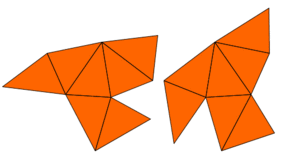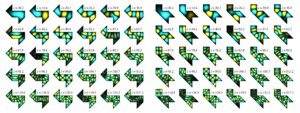Hearing the shape of a drum facts for kids
To hear the shape of a drum means to figure out what a drum looks like just by listening to the sounds it makes. This involves using special math to understand the drum's overtones, which are the different musical notes that make up its sound.
The idea became famous in 1966 with an article by Mark Kac titled "Can One Hear the Shape of a Drum?" The exact phrase was first used by Lipman Bers. Similar questions about sound and shape have been around since the time of Hermann Weyl. Mark Kac won awards for his paper, including the Lester R. Ford Award in 1967.
The sounds a drumhead can make depend on its shape. Math formulas, like the Helmholtz equation, can calculate these sounds if you know the drum's shape. These sounds are called "eigenvalues" in math. A big question was whether you could guess the shape if you only knew the sounds. Mark Kac didn't know if two different shapes could make the exact same sounds. In the early 1990s, mathematicians Carolyn Gordon, David Webb, and Scott Wolpert finally answered this question. They showed that, sometimes, you *cannot* tell the shape just from the sound.
What does "isospectral" mean?
In math, a "drum" is like a flat, stretchy sheet with its edges held still. We call this flat area a "domain." The special sounds (eigenvalues) a drum can make are its natural vibrations.
Two drums are called isospectral (or "homophonic") if they make the exact same set of sounds. The word "homophonic" means "same sound." These sounds are like the basic notes a drum can produce.
So, the big question is: if you only know the sounds a drum makes, what can you learn about its shape? More specifically, can two drums with different shapes make the exact same sounds?
Similar questions can be asked about drums in higher dimensions or about other types of mathematical shapes.
The answer to the drum question
Soon after Mark Kac asked his question, mathematician John Milnor found that some complex 16-dimensional shapes could sound the same but look different. However, the question for simple 2D shapes (like a drumhead) remained unanswered until 1992.
That's when Carolyn Gordon, David Webb, and Scott Wolpert built two flat shapes that looked different but made identical sounds. These shapes were concave polygons, meaning they had parts that curved inward. They proved these shapes sounded the same by using the way the math formulas for sound behave with symmetry.
This means the answer to Kac's question is: for many shapes, you cannot completely tell the shape of a drum just by listening to it. However, you can still learn some things about it.
On the other hand, Steve Zelditch later showed that if a drum's shape is smooth and curved outward (a "convex" shape), then you can usually tell its shape from its sound. It's still a mystery whether two non-convex shapes with smooth edges can sound the same.
Learning about area and perimeter
Even if you can't always know the exact shape, you can still learn important things about a drum from its sound.
A formula by Hermann Weyl tells us that you can figure out the area of the drum by looking at how quickly its sounds (eigenvalues) increase. The faster the sounds grow, the larger the drum's area.
Weyl also thought that the next part of the formula could tell you the perimeter (the length of the edge) of the drum. This idea was proven true in 1980 by Victor Ivrii for drums with smooth edges.
So, while you might not always hear the exact shape, you can often hear how big the drum is and how long its outer edge is!




